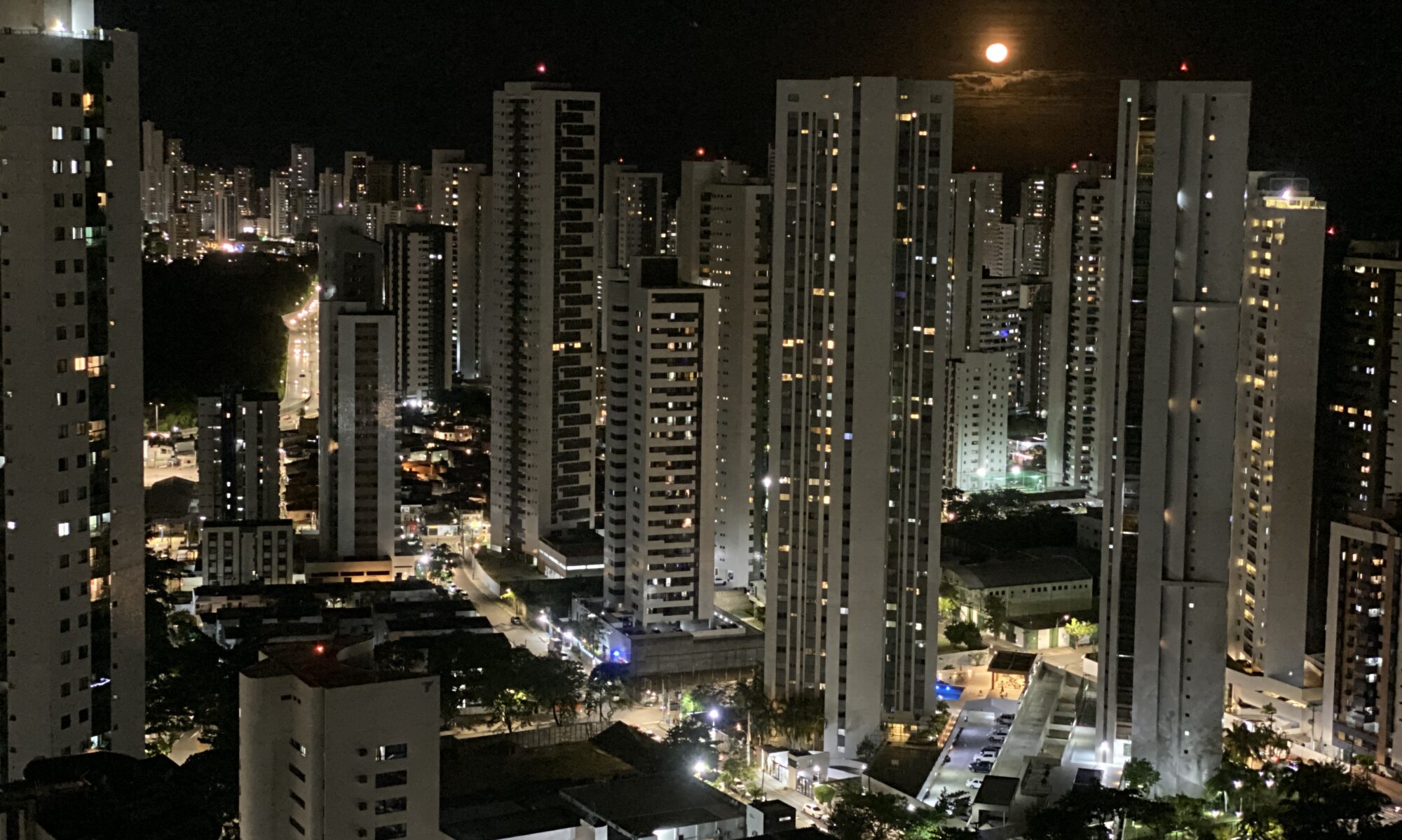The capital of Paraíba, João Pessoa, is one of the biggest attractions in the state. It is the second ranking city in the world in terms of green spaces, with more than 700 hectares of forested land, losing only to Paris. It gained this distinction in 1992, after a survey of urban centres in various countries carried out by the United Nations.
With its parks and avenues lined with fruit bearing and ornamental trees, João Pessoa also preserves parts of the Atlantic forest in the central area of the city, such as in the Parque da Bica – a zoological and botanical park – and in the Mata do Buraquinho, as well as the coconut palms and various other kinds of tree along the beaches, which attract thousands of tourists every year. The state has 230 kilometres of coastline and the best known beaches in the state, such as Tambaú and Manaíra, are located in or near the capital.
In the mid 16th century, Portuguese settlers from Pernambuco founded the small town of Filipéia de Nossa Senhora das Neves, today João Pessoa, at the mouth of the river Paraíba. Soon the sugar cane production began, attracting Portuguese, French as well as Dutch, all fighting for land. The cultural and historical influence of these is still present today in local architecture and monuments, and their legacy can be seen in the green eyes of many inhabitants of Paraíba.
With a rich historical inheritance, some towns in the state still preserve traces of colonial Brazil in their architecture. One of these is Cabedelo, 18 kilometres from João Pessoa, where the fortress of Santa Catarina was built at a strategic point for combating the Dutch and French invaders. Cabedelo also has the island of Areia Vermelha (Red Sand), where a vast sandbank emerges from the waters in the months of December and January. The town is of considerable economic importance to the state, because its port represents the only commercial distribution and export centre in Paraíba.
In the interior of the state, 120 kilometres from João Pessoa, lies Campina Grande, the second largest city of Paraíba in terms of population, where one of the biggest June festivals is held. St John’s Night, on 24 June, is commemorated in the Parque do Povo, an area of 42,000 m2 – half the size of Maracanã Stadium in Rio de Janeiro. Decked out in flags and with bonfires everywhere, the city of 326,000 inhabitants receives an average of 400,000 tourists from all over Brazil and abroad. Campina Grande also offers scientific adventure. 40 kilometres from the city centre are the Pedras do Ingá, stones bearing inscriptions of great archaeological value. Surrounded in mystery, they form with the Valley of the Dinosaurs an important paleontological site.
João Pessoa and Campina Grande are responsible for a large part of the economy of Paraíba, which is based on the leather industry, tourism and crop and livestock farming. As the third largest producer of shoes in Brazil, the state has more than 70 companies manufacturing leather items and more than 500 micro businesses in the informal sector of the economy. Originating in backyard workshops, the leather and shoe industry competes today on the national and international markets. Around 14 million pairs of shoes a year are produced. In agriculture, the main products are pineapples and sugar cane.
As regards tourism, besides the beaches and natural attractions of the state, it is worth sampling the local cuisine, based on sea food and dishes involving dried meat and manioc flour. The most typical dish is arrumadinho, made with beans, dried meat, tomatoes, onions peppers, coriander and manioc flour.

